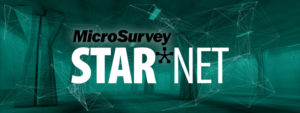What is new in MicroSurvey STAR*NET 9, compared to my old Starplus STAR*NET or MicroSurvey STAR*NET V6?
MicroSurvey STAR*NET 7, 8 and 9 feature a highly customizable integrated data editor, a powerful new Find Point tool to locate all input records for a particular point by double-clicking a point in any of the output files, loop closure checks for GPS and level networks, GPS sideshots, point aliasing via explicitly named aliases or prefix/suffix/additive schemes, support for MicroSurvey FieldGenius data collection software, and much more! Yet with all the changes, MicroSurvey STAR*NET 9 features the same extremely stable least squares processing engine that has been the core of STAR*NET, trusted by users worldwide for many years.

Will it be a big adjustment learning MicroSurvey STAR*NET 9?
The MicroSurvey STAR*NET 7, 8 and 9 interface is very different from the old V6 interface, but at its heart it continues to use the same trusted workflow as always. Data files are still the same text-based .dat files, project options are still exposed in the same familiar way (although with a few new additions), and processing an adjustment results in the same listing, plot, and output files you are used to. So the learning curve to transition from Starplus STAR*NET to MicroSurvey STAR*NET 9 will consist primarily of learning to use the power available in the new customizable interface and its integrated data editor. New tools like the advanced Find Point tool to located input data relating to a point by double-clicking on a point in the output files will save you more time the first time you use it, than it will take you to learn it. Point aliases, GPS sideshots, loop closure checks, and other new features are all simple to learn and use, you'll be up and running in no time!
The MicroSurvey STAR*NET 9 interface is nearly identical to the STAR*NET 7 and 8 interface, so if you are upgrading from it the learning curve will be minimal.